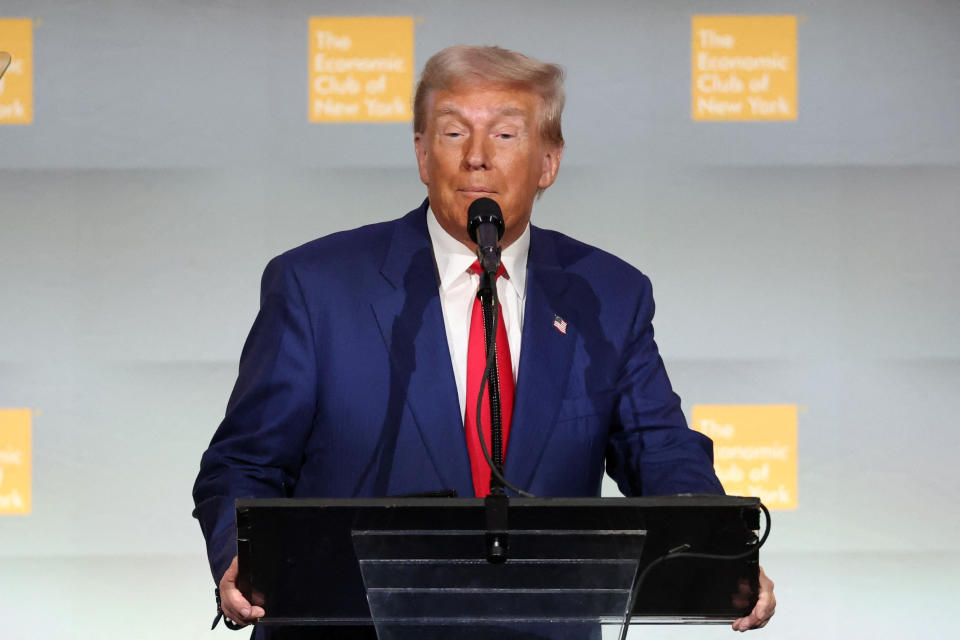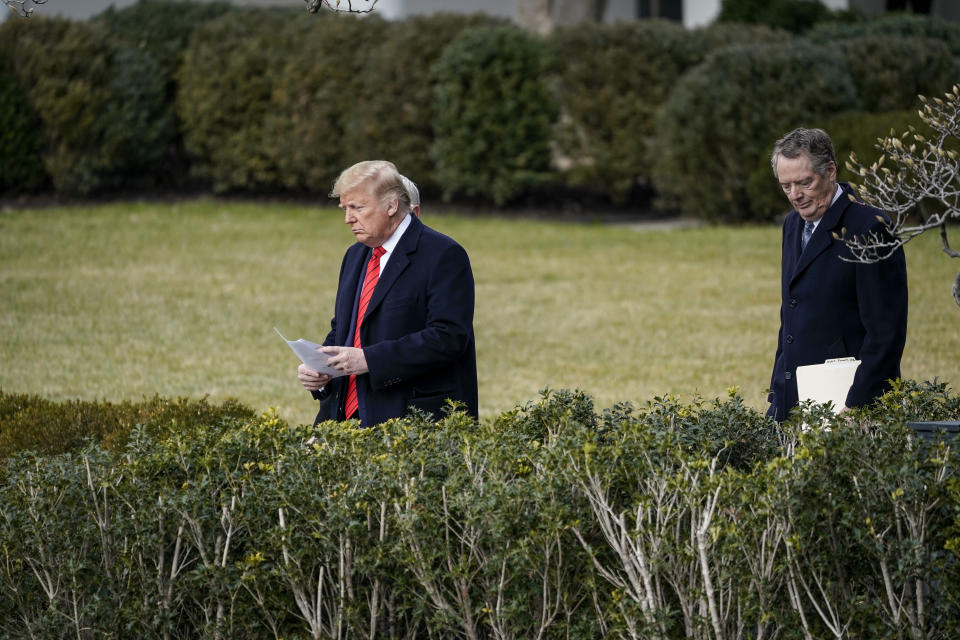Former President Donald Trump sought to offer a more detailed economic message in a speech in New York on Thursday — and paid particular attention to his oft-criticized agenda to impose a new wave of tariffs on U.S. imports from around the world.
“Some might call it economic nationalism, I call it common sense,” Trump told the crowd of business leaders gathered at the Economic Club of New York.
He also declined to give exact rates, but appeared to suggest that if elected, he could implement even higher tariffs than he has spoken about so far. “I won’t say the percentage today, but it will be a certain percentage of tariffs that will be higher than people have heard in the past,” Trump added Thursday.
Trump has already proposed imposing tariffs of 10 to 20 percent on U.S. trading partners, and higher rates of 60 percent on China. The plan has worried economists for months because it could revive inflation.
The former president also offered a wide range of other ideas during his nearly 80-minute speech and question-and-answer session.
His other proposals unveiled Thursday included approving a government efficiency commission first recommended by Tesla (TSLA) CEO Elon Musk, a new effort to cut government bureaucracy, lowering the federal corporate tax rate to 15% from its current level of 21%, declaring a “national emergency” to spur more oil drilling, and canceling some unspent green energy funds passed in Biden’s inflation-reduction bill.

But it was when the subject turned to tariffs that Trump became most animated, defending his long-term priority, first undertaken during his previous term in the White House.
He returned to the subject many times to respond to his critics.
“Smart tariffs will not create inflation, they will fight inflation,” he said at one point, trying to address a common criticism of his plan. Trump and his allies often point out that inflation was low when he was in office from 2017 to 2021, when he implemented the tariffs of that era.
Trump advisers have also stressed that a re-elected Trump might be eager to implement these ideas quickly, likely without the advice of Congress.
“There are certainly many laws that exist today that allow for tariffs to be imposed in a variety of circumstances,” former U.S. Trade Representative Robert Lighthizer told reporters before his speech.
“We saw it in our last administration and I suspect we’ll see some sort of combination of the two this time around as well.”
Lighthizer and other Trump allies have already discussed various laws to implement his tariffs quickly in 2025 and at higher levels than during his previous term if he wins. One option that has not yet been used is a 1977 law called the International Emergency Economic Powers Act, which allows the president to declare an economic emergency and act accordingly.

Public wary of Trump’s message
Trump’s deepening of the trade agenda comes as business distrust of his plans continues to be a notable obstacle for the president.
A new research note from Goldman Sachs underscored those concerns this week by finding that — at least when it comes to gross domestic product — a Kamala Harris victory with a Democratic sweep of Congress is the best outcome for economic growth.
According to analysts, Harris’ presence in the White House could lead to “a very slight increase in GDP growth on average over the 2025-2026 period.” But Trump’s victory scenarios would hit GDP largely because of a “growth hit from tariffs.”
Trump advisers have dismissed the Goldman Sachs analysis as too politically influenced, but it is only the latest study to highlight the possible costs of Trump’s new tariff plans, which are duties levied on companies when their goods arrive at U.S. ports of entry.
The Peterson Institute for International Economics did the math and found that Trump’s idea of 60% tariffs on China and 10% on other trading partners would result in the average middle-class household paying at least $1,700 more each year.
Another estimate by Brendan Duke of the left-leaning Center for American Progress is even higher. He found that a 20 percent tariff combined with a 60 percent tax on Chinese goods could translate into an additional cost of $3,900 per year for an average family.
That last statistic is one that Vice President Kamala Harris and her campaign have repeatedly highlighted in recent weeks, comparing it to a national sales tax.
Yet Trump returned to the issue of tariffs several times during his speech Wednesday as one of the pillars of his potential second-term agenda.
He said tariffs could raise billions and reduce deficits. They would help rebuild the U.S. auto industry. He also expressed nostalgia for a bygone era when tariffs were a major driver of U.S. revenue “before the income tax.”
“In short, it will be an economic renaissance,” he promised of what a second wave of trade wars would bring.
Ben Werschkul is a Washington correspondent for Yahoo Finance.
Click here for political news related to trade and financial policies that will shape tomorrow’s stock prices
Read the latest financial and business news from Yahoo Finance
#Donald #Trump #reiterates #tariff #ideas #York #business #leaders